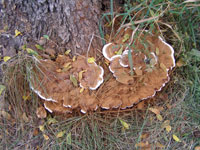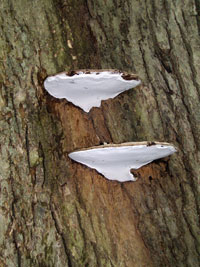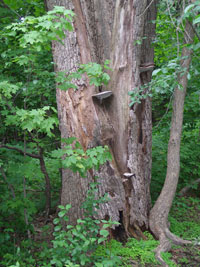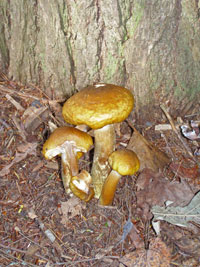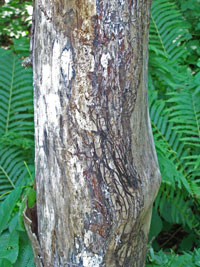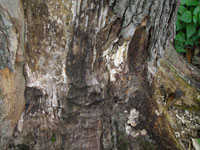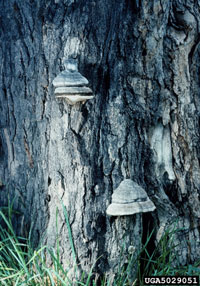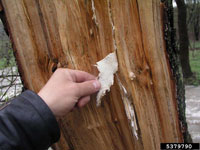Extension > Garden > Diagnose a problem > What's wrong with my plant? > Deciduous Trees > Hickory > Fungi growing on trunk or branches
Hickory > Trunk/Branches > Fungi growing on trunk or branches
1 of 3
Ganoderma root and butt rot
Ganoderma spp.
- Leaves are small and may yellow and drop
- Canopy appears thin with few leaves and multiple dead branches
- Fungal conks, semicircle shelf fungi, can be found from the base of the tree up to 3 feet high on the trunk
- Conks are reddish brown and shiny on top, white and porous underneath, a rim of white may be visible on the edge of the growing conks
- Infected wood at the base of the tree is white, soft, stringy or spongy
- Infected trees frequently break or fall over in storms
- More information on Ganoderma root and butt rot
2 of 3
Armillaria root rot
Armillaria spp.
- Infected trees have poor growth, dead branches in the upper canopy, undersized and/or yellow leaves
- Flat white sheets of fungal growth (mycelial fans) between the bark and sapwood at the base of infected trees
- Thick black, shoestring-like fungus can sometimes be seen under the bark, around roots and in the soil around the base of the tree
- Wood is decayed, white, soft and spongy; this may extend from the base of the tree well up into the trunk
- Trees frequently break or fall over in storms
- Clusters of honey-colored mushrooms may grow at the base of the tree in fall
- More information on Armillaria root rot
3 of 3
Heart rot
Fomes fomentarius
- Canopy may show no symptoms, or may have small, yellowing leaves or dead branches depending on the extent of decay
- In cross section, the wood at the center of the trunk is white, mottled, soft and crumbly
- Hoof-shaped, silvery-grey to brown, fungal fruiting bodies up to 8 inches across arise along the stem; often near a pruning wound, crack or other wound
- More information on heart rot



